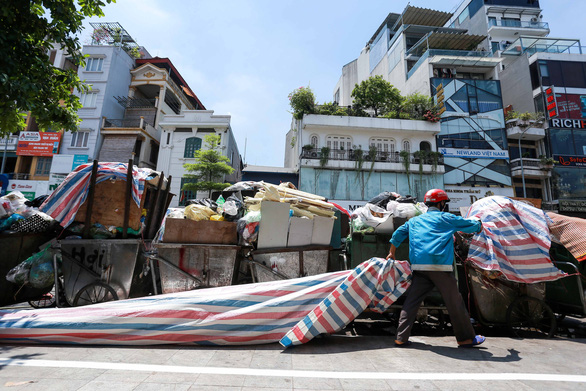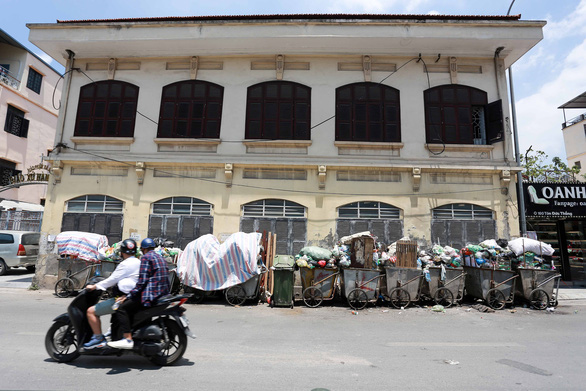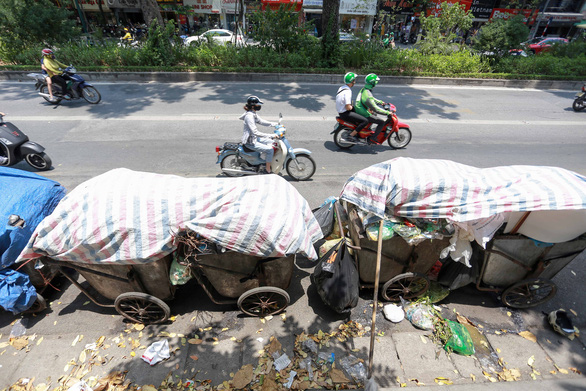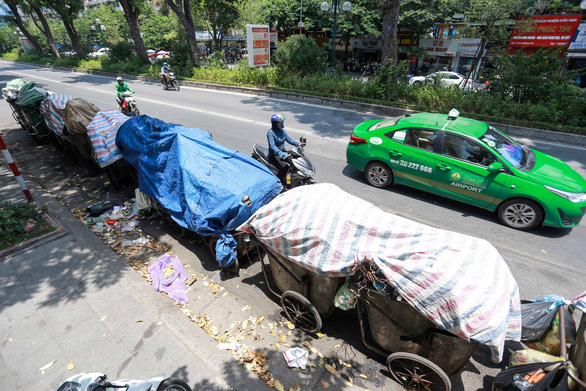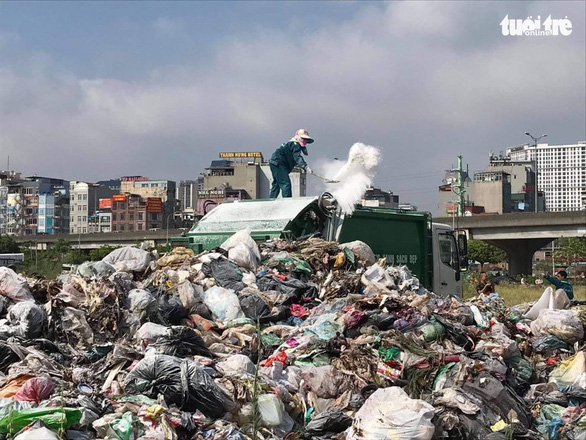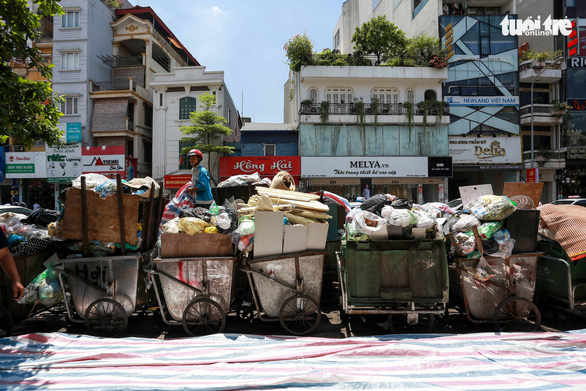People living near a waste treatment plant in Hanoi blocked a road leading to its dump due to a compensation dispute, causing garbage to remain uncollected and pile up in many districts.
Local people in Nam Son and Hong Ky Communes of the capital’s Soc Son District started assembling and stopping trucks from entering the Nam Son waste treatment complex on Monday night.
They pitched tents on the main road leading to the landfill, the largest in Hanoi, and remained there until 1:00 pm on Friday, when they finally agreed to leave following a dialogue with city leaders.
Their action was a response to the city’s tardiness in paying compensation to and resettling people living within a 500-meter radius of the dump.
Affected families said have only received compensation for their agricultural land but not for their houses or gardens.
|
|
| Uncollected garbage piles up on a street in an urban district of Hanoi, Vietnam, July 16, 2020. Photo: Chi Tue / Tuoi Tre |
Authorities of Soc Son District and Nam Son and Hong Ky Communes tried to negotiate with the local people to no avail.
As of Thursday, about 9,000 metric tons of garbage had heaped up along many streets across the Vietnamese capital city, including 6,600 metric tons in its 12 urban districts.
As a quick fix, the municipal Department of Construction directed that waste from the four urban districts of Hoan Kiem, Ba Dinh, Dong Da, and Hai Ba Trung would be temporarily transported to the Cau Dien waste treatment complex in Tay Mo Ward of Nam Tu Liem District.
However, locals in Tay Mo Ward also prevented garbage trucks from entering the place.
|
|
| Uncollected garbage piles up on a street in an urban district of Hanoi, Vietnam, July 16, 2020. Photo: Chi Tue / Tuoi Tre |
As a result, the Cau Dien waste treatment complex had only been able to receive only 283 metric tons of garbage from the four aforementioned urban districts by 6:30 pm on Thursday, according to the online newspaper Ha Noi Moi (New Hanoi), the mouthpiece of the municipal Party Committee.
As a last resort, the construction department coordinated for 4,268 metric tons of garbage to be sent to the Xuan Son solid waste disposal complex in Ba Vi District, the Ha Noi Moi reported.
This is not the first time such an incident has occurred at the Nam Son waste treatment complex.
People in Soc Son also blocked the entry to the plant’s dumpsite last year and several other times in the past.
Yet Hanoi and Soc Son authorities have been slow to compensate people suffering from the environmental impacts of living close to the complex.
|
|
| Uncollected garbage piles up on a street in an urban district of Hanoi, Vietnam, July 16, 2020. Photo: Chi Tue / Tuoi Tre |
Built in 1999, the Nam Son waste treatment complex spans over 157 hectares in Soc Son, receiving almost 5,000 metric tons of garbage every day and burying all of it, according to the news site VnExpress.
It also reported that Hanoi generates 6,500 metric tons of solid domestic waste daily, 89 percent of which is buried.
In January, the city ordered Soc Son District to quickly finalize plans to compensate and relocate affected families living within a 500-meter distance from the Nam Son dump.
There are 2,000 households living and farming on a total area of 396 hectares set to be relocated, according to VnExpress.
After a dialogue with Hanoi’s deputy Party chief Dao Duc Toan and the municipal leaders on Friday morning, local people in Nam Son and Hong Ky Communes packed up their tents and left.
Garbage trucks entered the Nam Son landfill for the first time in four days on the same afternoon.
|
|
| Uncollected garbage piles up on a street in an urban district of Hanoi, Vietnam, July 16, 2020. Photo: Xuan Long / Tuoi Tre |
|
|
| Uncollected garbage piles up on a street in an urban district of Hanoi, Vietnam, July 16, 2020. Photo: Chi Tue / Tuoi Tre |
Like us on Facebook or follow us on Twitter to get the latest news about Vietnam!



